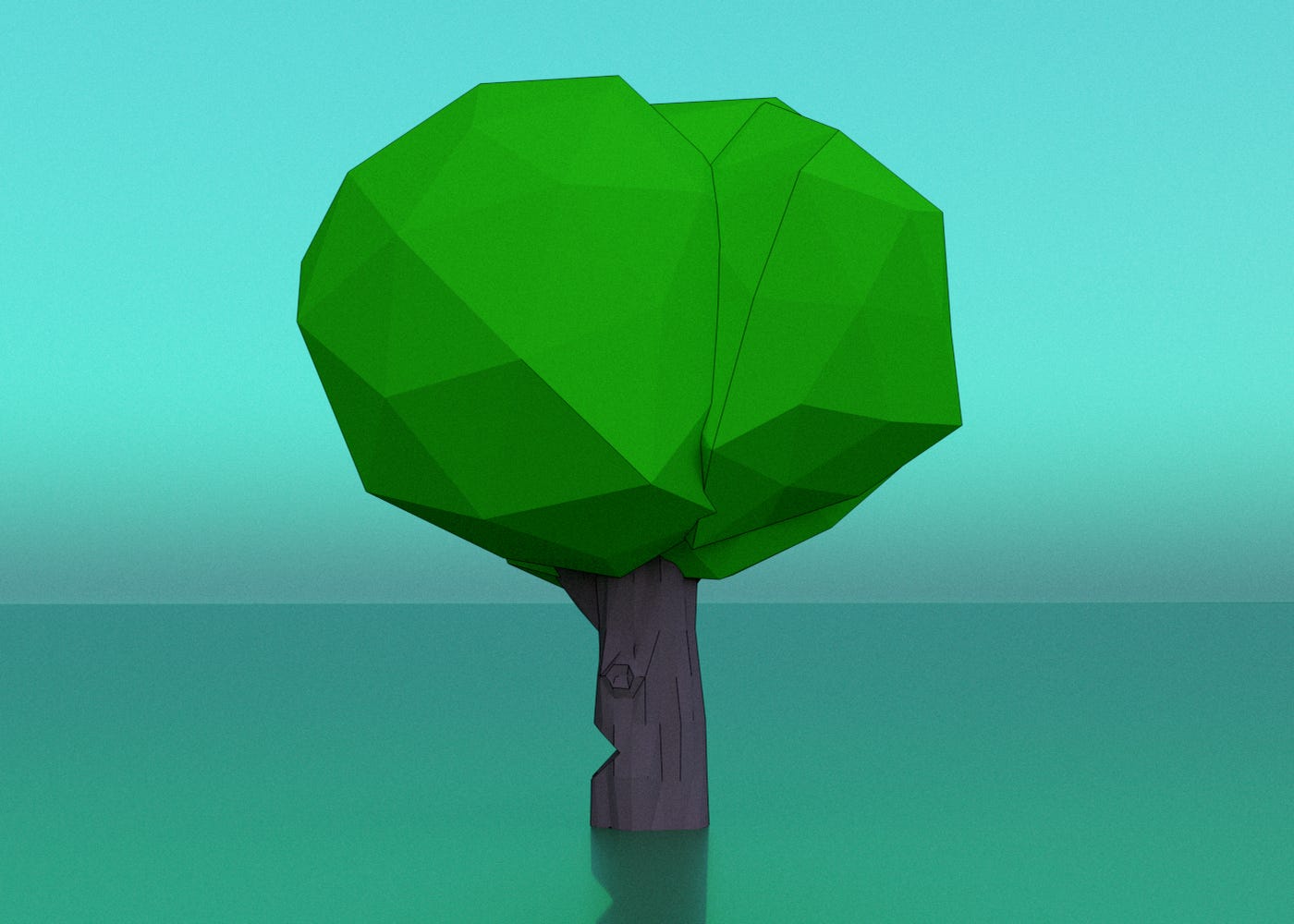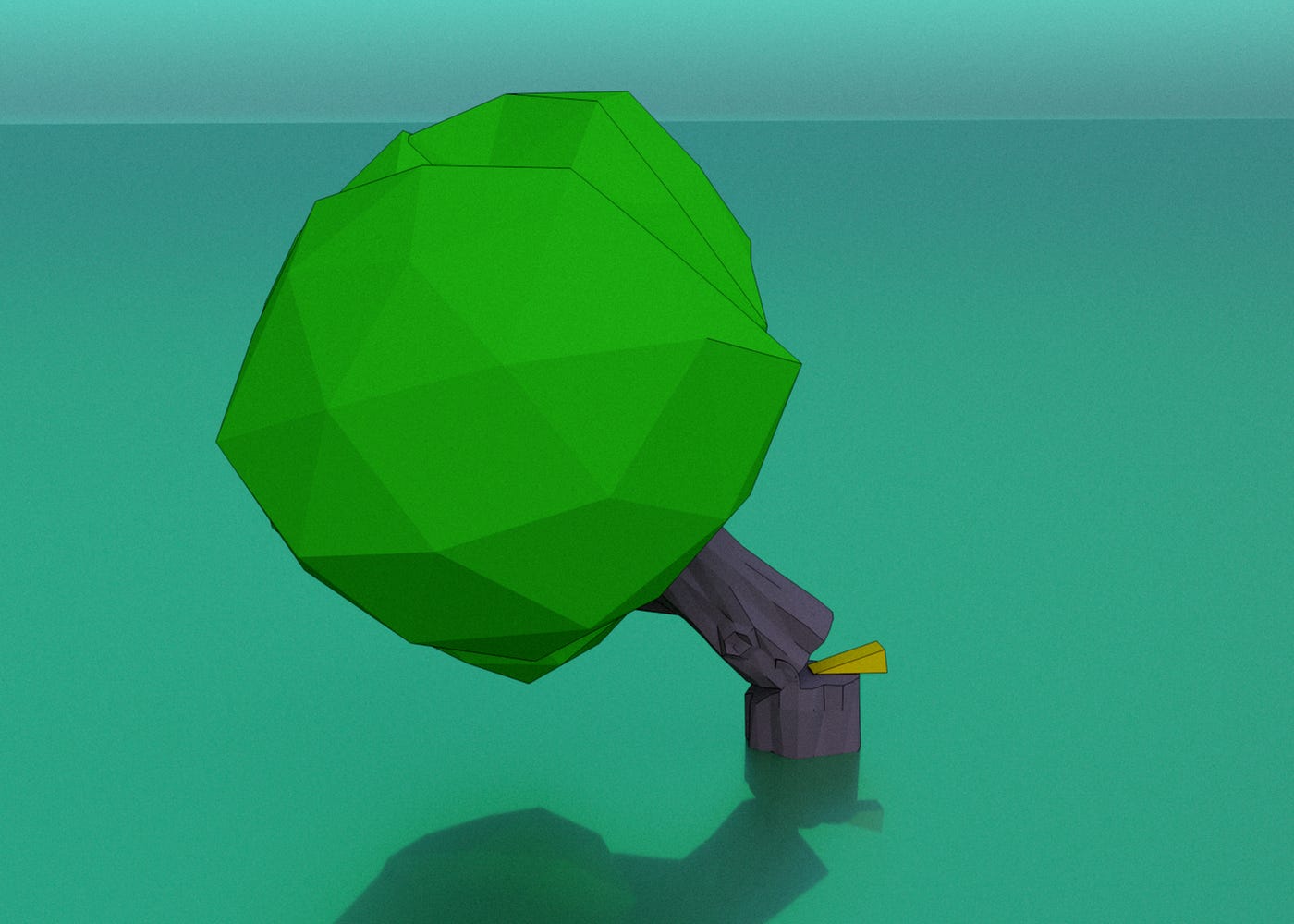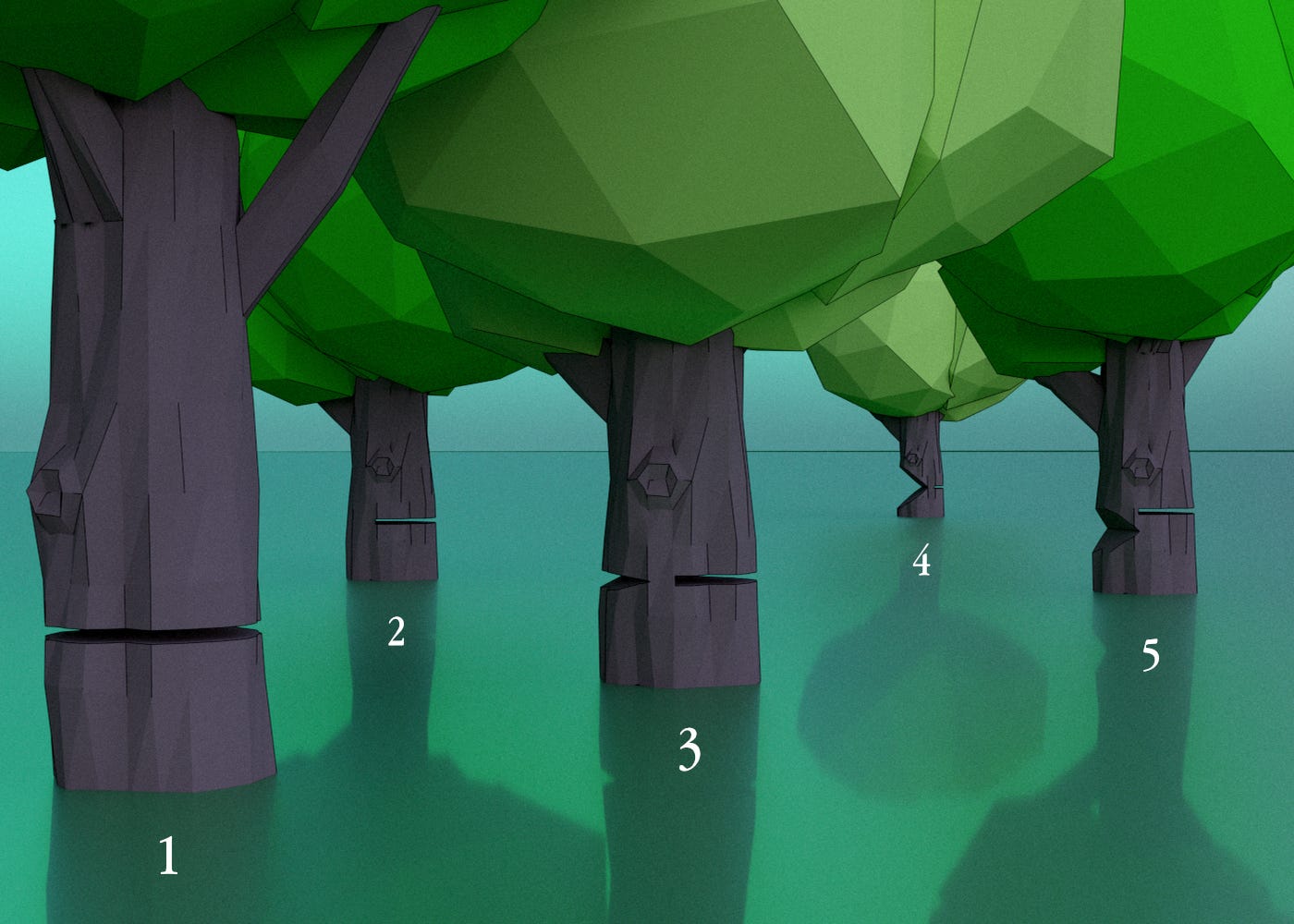How not to fell trees
A surprising amount of engineering goes into felling trees. Too bad that the craft doesn't pay well.
If you live someplace rural, you might be familiar with the proper way to fell a tree. The safest method, known as the open-faced notch, appears simple — but there’s more to it than meets the eye.
Here’s how it goes. First, you cut a V-shaped notch facing where you want the tree to go. The notch should have an angle of around 70° and go perhaps 1/5th to 1/4th into the trunk:
Next, you cut a straight slot on the opposite side, leaving roughly 2” of uncut material in between. This forms a living hinge:
Finally, you take a triangular plastic wedge and hammer it into the slot, causing the tree to tilt and eventually fall:
I recorded a quick video showing the process start to finish:
The method is obvious once explained; to understand what’s special about it, let’s have a look several other intuitive (but far more dangerous) ways of bringing down a tree.
If you hand a novice a chainsaw, they will probably make a cut similar to #1. In most cases, this shouldn’t be attempted. The near-certainty of pinching the chainsaw bar aside, the trunk will fall in an unpredictable direction and may slip or roll off the stump, crushing the logger in the blink of an eye.
The simplest hinge to constrain the movement can be formed as shown in #2. That said, in contrast to modern felling cuts, the hinge is placed in a narrow section of the trunk, and will snap off easily if the tree is leaning to the side.
Some felling cuts rely on lower-angle notches. But if the angle is too low (#3), the hinge will close prematurely, snap off, and send the trunk into an uncontrolled fall. About 70° is a safe pick.
Many YouTube videos show deep notches and shallow slots (#4). This approach might work if the tree is leaning where you want it to go — but it reduces the leverage for the wedge and can make it difficult to fell larger trees against their natural lean.
Another popular YouTube trope involves cuts that don’t line up. This is not necessarily a problem, but wood is only strong along the grain; the cut shown in #5 effectively severs all vertical wood fibers that make the hinge.
There’s hidden complexity and nuance to almost every human activity. In my field, computer folks are notorious for claiming to have an intuitive grasp of other professions, from farming to biotech. That might be, but it’s best not to stand near when a software engineer is working on a tree.






Really enjoyed this one (I am now going through the substacks chronologically)
"it’s best not to stand near when a software engineer is working on a tree" brings a smile and thank you!
Would definitely not advise anyone to cut a larger tree against its lean.